How to collect anonymous employee feedback with Google Forms?

Ever wondered how to unlock the treasure trove of anonymous employee feedback? Well, fear not, for we've got an ingenious solution that'll help you unlock the secret vault of your employees’ opinions while keeping their identities under wraps.
As the great Oscar Wilde once said, "Man is least himself when he talks in his own person. Give him a mask, and he will tell you the truth." And boy, oh boy, can we relate to that sentiment in the realm of employee feedback!
Sometimes, the fear of repercussions or awkward confrontations can stifle the genuine thoughts that employees have about their workplace. But Anonymous Google Forms is here to save the day.
So, grab a cup of coffee, settle into your comfiest chair, and let's explore how you can unlock the full potential of anonymous employee feedback using the trusty ally that is Google Forms.
TL;DR
What is an anonymous survey?
TL;DR
An anonymous survey collects feedback without revealing respondents’ identities, encouraging honest input. Tools like Google Forms allow creation of anonymous surveys or submission forms, ideal for sensitive topics, employee satisfaction surveys, and ensuring candid insights while maintaining privacy and trust.
An anonymous survey is a type of survey designed to collect feedback without revealing the identity of the respondent. Platforms like Google Forms allow you to create an anonymous survey in Google Forms or an anonymous submission form, ensuring participants can provide honest insights without fear of being tracked.
Many organizations use this method for employee satisfaction surveys because it encourages transparency and candid feedback. You might wonder, can anonymous Google Forms be tracked—generally, if no identifying information is collected, responses remain confidential.
However, features like Google Form hidden questions or account sign-ins can sometimes reveal identities, so it’s essential to configure your form carefully. Understanding and analyzing Google Forms anonymous responses is crucial for maintaining trust.
Anonymous surveys are ideal for gathering sensitive feedback while respecting privacy, helping organizations make informed decisions based on genuine input.
Importance of anonymous surveys in the workplace
Anonymous surveys play a pivotal role in fostering transparency and honesty within organizations. They provide a safe space for employees to share their thoughts, leading to more genuine insights.
Here are 6 key reasons why anonymous surveys are essential:
TL;DR
Anonymous surveys play a crucial role in fostering transparency and trust at work. They encourage honest feedback, uncover hidden issues, and boost participation, providing management with authentic insights.
By using these surveys, organizations can make informed decisions, promote a positive culture, enhance employee engagement, and ensure that all voices are heard safely and confidently.
- Encourages honest feedback: Employees are more likely to be truthful when their identities are protected. This anonymity reduces the fear of negative consequences, enabling employees to provide candid feedback on sensitive issues through anonymous survey responses.
- Boosts employee engagement: When employees know they can voice their opinions freely, they feel valued and heard. This increases engagement, as they recognize that their input is crucial to organizational growth.
- Uncovers hidden issues: Many workplace issues, such as low morale or management problems, often remain hidden due to fear of retaliation. Anonymous surveys help bring these problems to light, allowing leadership to address them proactively.
- Improves decision-making: Anonymous surveys offer unfiltered insights, providing management with the necessary data to make informed decisions. The authenticity of the feedback leads to more accurate assessments of organizational health.
- Promotes a positive work culture: Employees are more likely to respect and trust leadership when their concerns are addressed anonymously. This cultivates an open and supportive work culture where employees feel safe to express their opinions.
- Increases participation rates: The anonymity factor often leads to higher survey participation rates, as employees feel more comfortable contributing without fear of exposure. This broader participation provides a more comprehensive understanding of employee sentiments across the organization.
When to use anonymous surveys?
In a world where open and honest communication is the key to success, anonymous surveys are your trusty companions.
If you want candid responses, always make Google Forms anonymous before collecting workplace insights. Make google forms anonymous and you'll uncover hidden gems of insight that can help steer your ship toward the shores of progress.
- When honesty trumps formality: Use anonymous surveys to get unfiltered feedback on sensitive topics, ensuring participants provide candid opinions rather than polite nods.
- During organizational change: New policies, systems, or restructuring can create anxiety. Unlike a non anonymous survey, anonymous surveys allow employees to voice concerns safely, smoothing transitions.
- Feedback on management: Assess leadership effectiveness by gathering anonymous insights from employees, helping boost morale and guide improvements.
- Handling workplace conflicts: Anonymous surveys help identify the root causes of tensions or disputes without escalating issues.
- To gauge job satisfaction: Regular anonymous feedback provides a clear picture of employee satisfaction and highlights areas for improvement.
- Post-training evaluations: Collect honest assessments of workshops or training sessions to measure their real impact.
- During crisis situations: Anonymous surveys help understand evolving employee concerns and guide timely response strategies.
- Diversity and inclusion initiatives: Gain insights into employees’ experiences and perspectives safely, supporting an inclusive workplace culture.
- Periodic check-ins: Use anonymous surveys as part of routine check-ins to monitor engagement and emerging issues.
- Anonymous reporting of misconduct: Provide a safe way for employees to report unethical behavior, ensuring confidentiality and accountability.
- Product development and improvement: Gather candid suggestions on products or services to inform innovation and enhancements.
- Preparing for performance reviews: Collect input anonymously to better understand strengths and areas for improvement before appraisals.
- Anonymous suggestions and innovations: Encourage employees or customers to share new ideas while maintaining privacy.
- Gathering testimonials and success stories: Use anonymous surveys to collect feedback safely, then follow up for permission to use quotes in marketing materials.
Are Google Forms anonymous?
TL;DR
Google Forms can be anonymous when settings like “Collect email addresses” are disabled, allowing employees to provide feedback without revealing their identities. This ensures responses remain confidential and encourages candid participation.
However, respondents might still reveal personal details in their answers, so it’s important to guide them on avoiding identifiable information to maintain true anonymity.
So, are Google Forms truly anonymous? The answer is a resounding yes! When you disable the collection of email addresses, the veil of secrecy descends upon your form, ensuring that respondents can share their thoughts without revealing their identities.
When you create anonymous Google Forms, it won't reveal who said what, keeping everything hush-hush and giving your employees the freedom to express themselves openly. It's like a secret society of feedback where honesty reigns supreme. So rest assured, my curious comrade, and unleash the power of anonymous employee feedback with Google Forms.
Your employees' identities shall remain hidden, allowing their thoughts to flow freely and unencumbered. Embrace the beauty of anonymity and let the truth be heard!
However, it’s important to note that while you can make Google Forms anonymous, respondents may still accidentally reveal personal information in their answers. For instance, if respondents mention specific details like names, job titles, or unique experiences in their responses, it could compromise their anonymity. To maintain complete discretion, it's crucial to remind participants to focus on the feedback itself and avoid sharing identifiable information.
And Google Forms doesn’t automatically track IP addresses or personal data unless explicitly set up by the form creator. This reinforces the anonymity, making it a reliable tool for gathering unfiltered, candid opinions.
So, whether you're gathering honest insights on workplace culture or conducting a sensitive survey, anonymous Google Forms ensure that privacy is maintained, allowing employees to express their true thoughts without hesitation.
Does google forms expose IPS, device info, or account details to creators or domain admins?
You can easily learn how to collect anonymous feedback in Google Forms by tweaking a few privacy settings. If you’re running an employee satisfaction survey in Google Forms, knowing how to make a Google Form anonymous or how to create an anonymous survey in Google Forms is key to building trust. Understanding what data is collected, and who can see it, is key to building trust in workplace surveys.
- IP addresses: Google Forms does not show IP addresses to form creators. However, certain linked add-ons or Google Apps Script automations can be configured to log them.
- Device info: Browser type, operating system, and other device details are not automatically visible. They can only be gathered if explicitly asked via form questions.
- Account details: Respondent names and emails are shared only if “Collect email addresses” is enabled or sign-in is required to access the form.
- Domain tracking: In Google Workspace (formerly G Suite), domain admins can associate responses with logged-in user accounts when sign-in is enforced.
- Anonymity tips: For stronger privacy, disable email collection, avoid sign-in requirements, and use caution when enabling third-party add-ons or scripts.
Which question types in Google Forms risk deanonymization?
Some people still wonder, “Can I see who answered my Google Form?” or “Is there a way to see who filled out a Google Form?”.
The answer depends on your settings — you can also choose how to make a Google Form not anonymous if tracking responses is necessary.
Even when a Google Form appears anonymous, certain question formats can unintentionally reveal respondents’ identities. Being aware of these risks helps protect privacy when designing surveys.
- Name and email fields: Directly request identifiable details, instantly linking responses to a person. Even optional fields can lead to accidental disclosure.
- Contact information questions: Asking for phone numbers, addresses, or employee IDs creates an easy trail back to the respondent.
- Free-text questions: Open-ended responses may contain self-identifying clues like job titles, locations, or project details.
- Department or team selection: In small groups, choosing a specific team or role can narrow down the respondent’s identity.
- Date-specific answers: Questions about start dates, birthdays, or recent events can make it easy to pinpoint individuals.
- File upload requests: Uploaded files often carry embedded metadata like the creator’s name or account information.
- Demographic details in small samples: Gender, age, or location data can quickly identify someone when combined with other known facts.
Does limiting form responses affect anonymity?
The good news is that limiting form responses does not compromise the anonymity of your Google Forms. When you set a response limit, it merely puts a cap on the number of submissions the form can receive.
Think of it as controlling the influx of feedback rather than revealing any identities. The anonymity factor remains intact, allowing employees to share their thoughts without fear. Whether you choose to limit responses to a specific number or leave it open-ended, the cloak of secrecy remains firmly in place.
So, go ahead and customize those response limits as per your needs. Keep the anonymity alive and let the feedback flow freely, for the power of Google Forms shall protect the identities of your contributors throughout the journey.
What is “anonymous feedback” in Google Forms, and when is it appropriate at work?
Anonymous feedback allows employees to share honest opinions without attaching their identity, making it easier to surface sensitive issues or highlight improvement areas without fear of judgment. Learning how to create anonymous survey in Google Forms helps you gather honest feedback while protecting respondent privacy.
While Google Forms offers basic anonymity, more advanced tools like CultureMonkey ensure secure, bias-free insights with richer analytics for decision-making.
- Encourages honest participation: When employees feel safe to express their thoughts freely without being identified, they are more likely to provide transparent feedback that reflects true engagement levels.
- Surfaces sensitive issues: Anonymous feedback can reveal concerns about leadership, workplace culture, or operational fairness that employees might avoid raising in person.
- Supports psychological safety: Removing the fear of retaliation fosters an environment where employees feel heard, boosting trust and long-term cultural health.
- Guides leadership action: Insights from survey responses collected anonymously can help managers and HR leaders make targeted interventions, improving employee experience and engagement.
- Avoids bias in responses: By eliminating name associations, the feedback is less influenced by personal relationships or office politics, enabling fairer evaluations.
- Best used for delicate topics: It is most appropriate for pulse surveys, engagement surveys, or topics involving policy changes, workplace conflict, or performance feedback.
- Limitations with Google Forms: While it can collect anonymous inputs, it lacks sentiment analysis, real-time analytics, and secure integrations that platforms like CultureMonkey offer.
How to make a Google form survey anonymous?
Now that we're all ears and ready to unravel the secrets of gathering anonymous employee feedback, let's delve into the step-by-step process of making Google Forms anonymous to accomplish this noble task. And the best part? Making Google Forms anonymous won't cost you a single penny!
Step 1: Set the stage
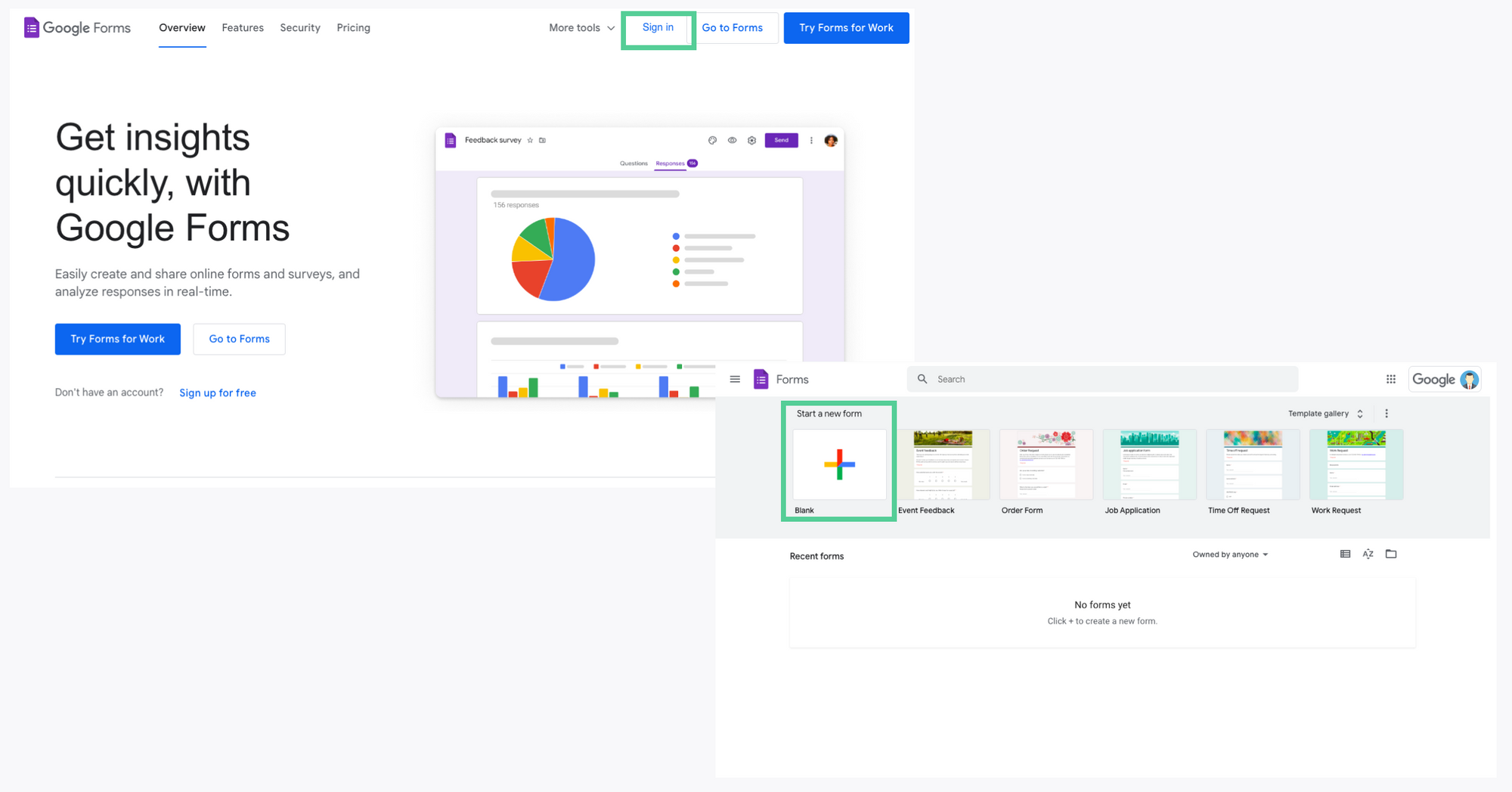
First things first, open up your Google account and head over to Google Forms. If you don't have an account, fret not! Creating one is as easy as pie. Once you're in, click on the "+" button to create a new form.
Step 2: Craft your questions
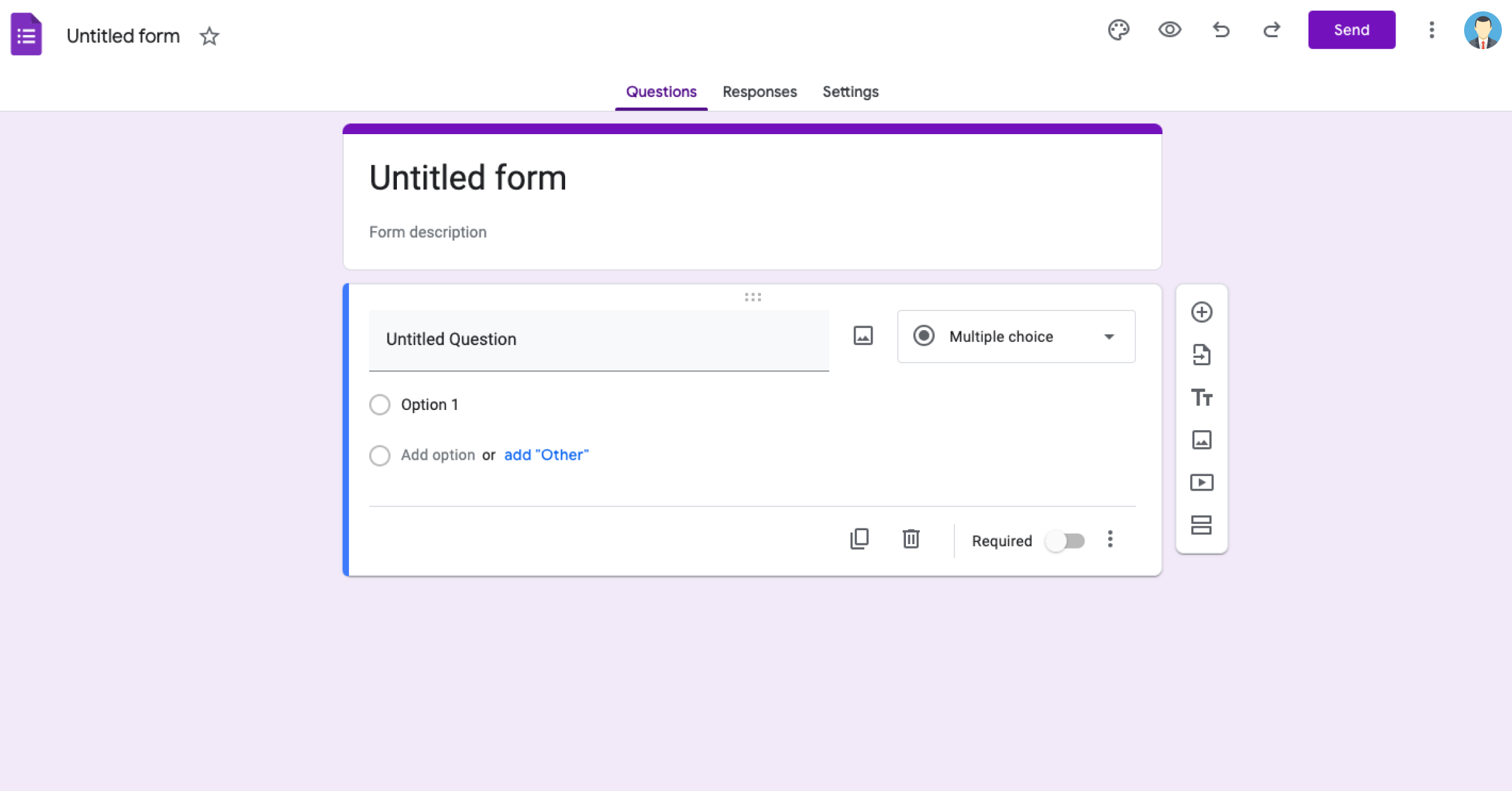
Now comes the fun part! Think about the kind of feedback you're seeking and create your survey questions accordingly. Keep them clear, concise, and open-ended to encourage honest feedback. Remember, the goal here is to make employees feel comfortable expressing their thoughts without any fear of judgment.
Step 3: Ensure anonymity
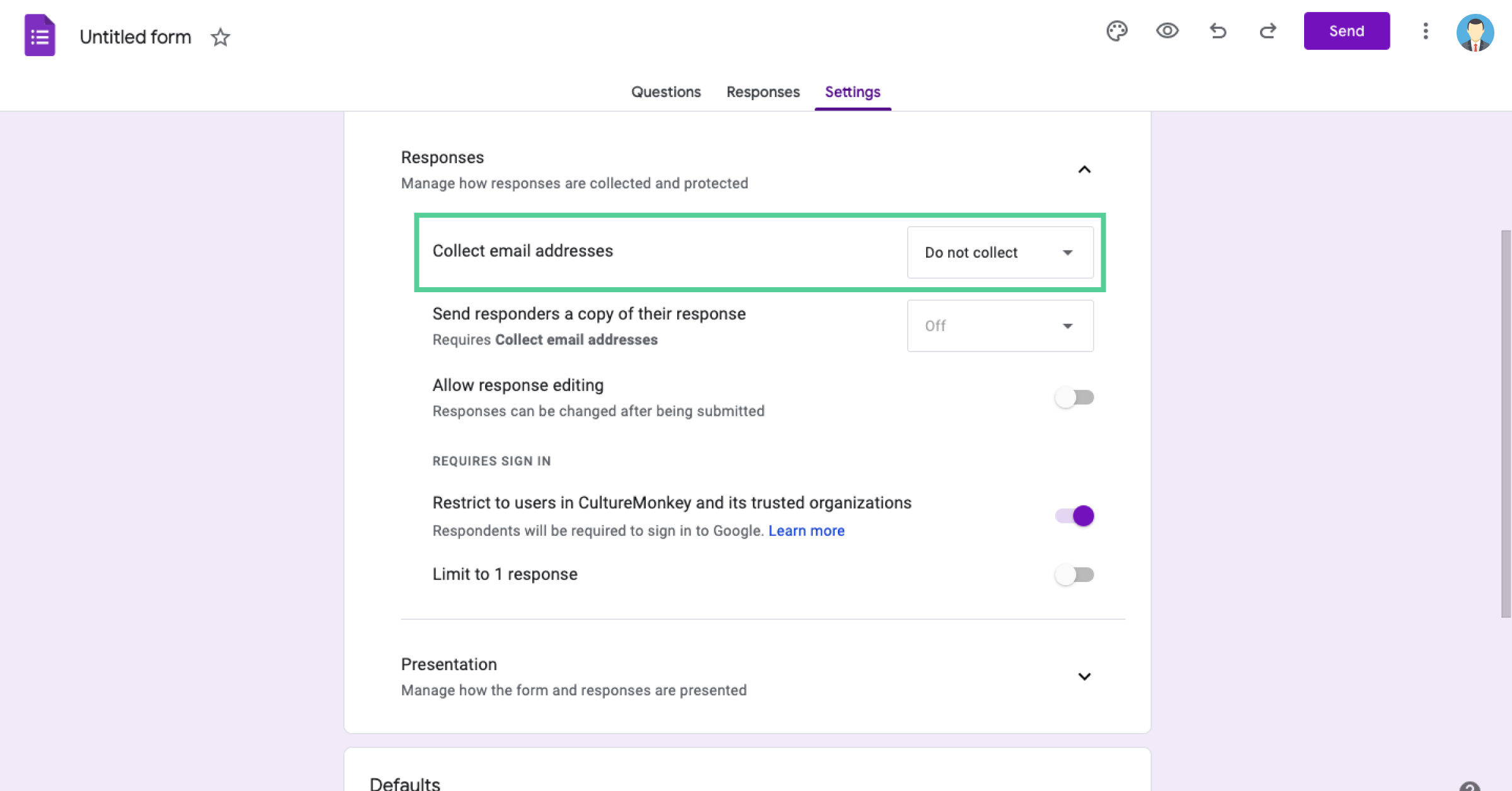
To guarantee anonymity, go the extra mile and adjust the settings to make Google Forms anonymous. Click on the settings cogwheel and select the "Responses" tab. Toggle off the "Collect email addresses" option to make sure responses remain incognito.
Step 4: Spruce it up
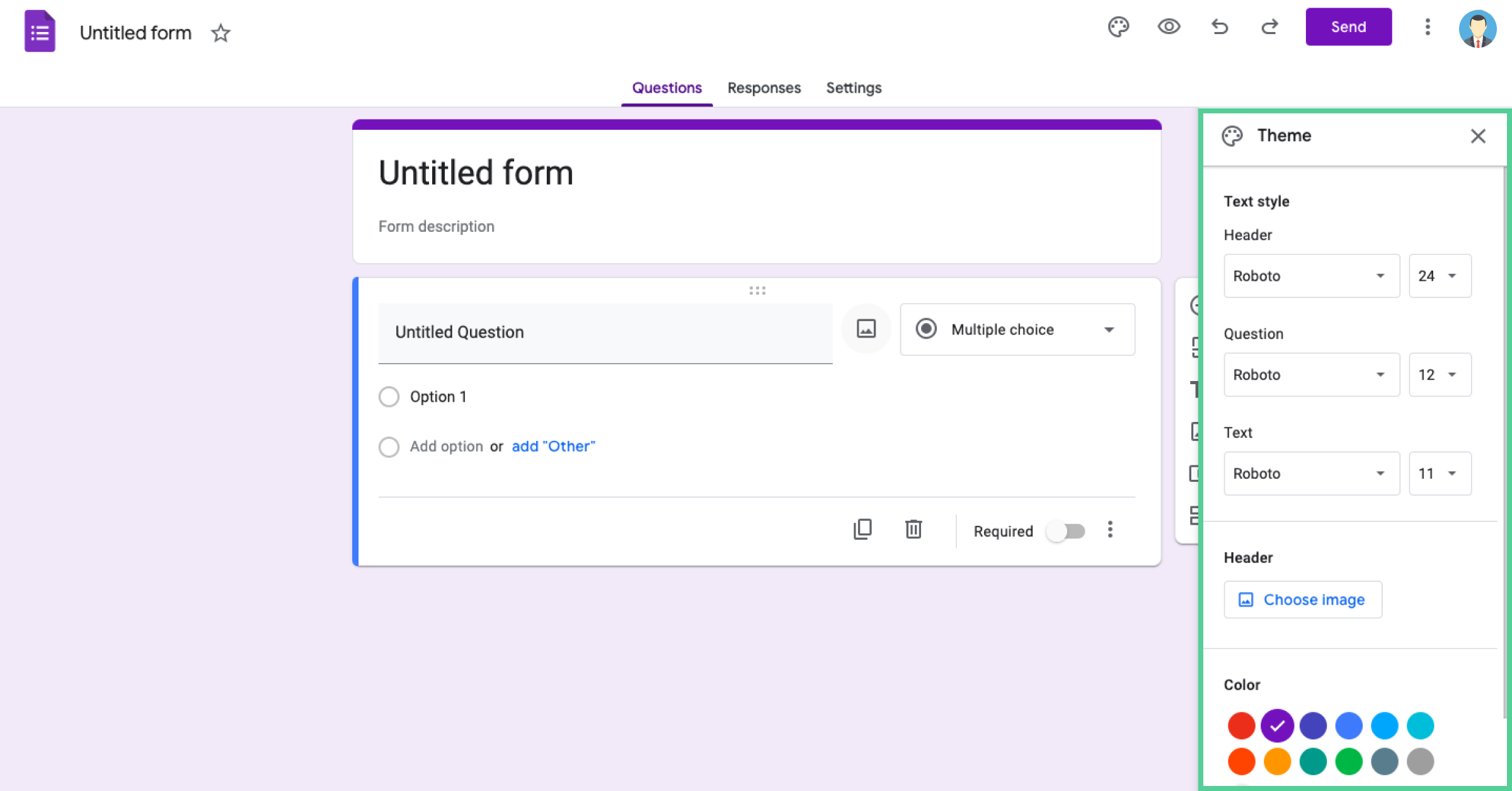
Make your form visually appealing by customizing the theme, adding images or videos, and even incorporating your company logo. A little extra effort in the aesthetics department can go a long way in engaging employees and enticing them to participate.
Step 5: Distribute and collect
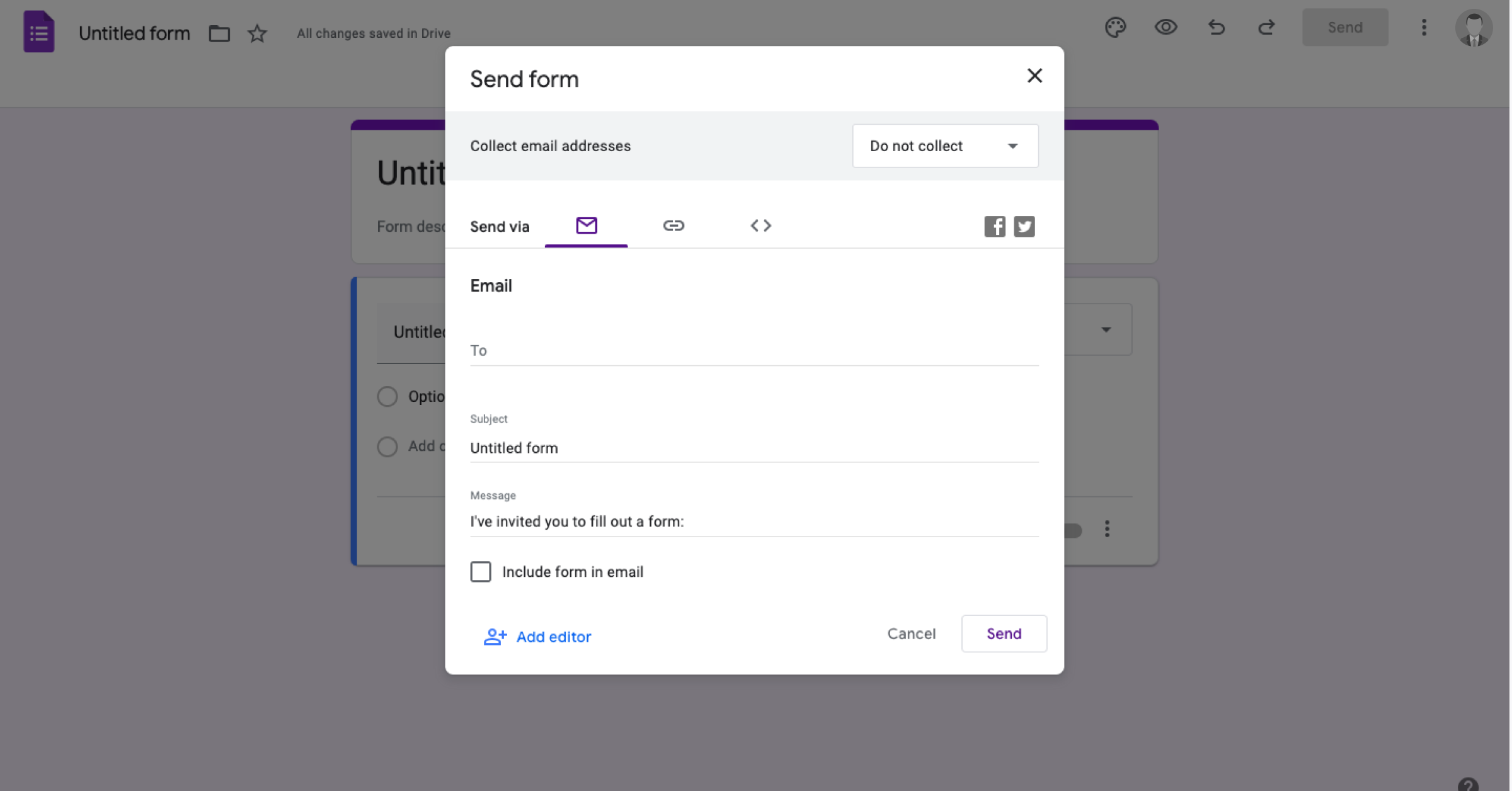
Once your masterpiece is ready, share the form with your employees. You can do this by simply sending them the form link via email or embedding it on your company's intranet. Sit back, relax, and watch as the anonymous feedback pours in!
And voilà! You've successfully harnessed the power of Google Forms to gather anonymous employee feedback without spending a dime. Now, go forth and embrace the valuable insights that await you, my adventurous friend. Remember, the truth shall set you free!
How do we balance anonymity with abuse/spam prevention in Google Forms?
Balancing anonymity with abuse prevention in Google Forms requires careful question design and strategic settings to protect privacy while filtering out spam or harmful responses.
- Avoid personal identifiers: Exclude name, email, or location fields unless absolutely necessary, as these can compromise anonymity.
- Use response validation: Apply limits and set responses like word counts, required formats, or numeric ranges to deter multiple responses, spam or nonsensical answers without collecting personal data.
- Enable “limit to 1 response” with caution: This reduces spam but requires sign-in, which may weaken anonymity.
- Randomize questions or choices: Shuffling the order prevents pattern-based abuse while keeping responses anonymous.
- Monitor responses for patterns: Review entries for duplicates or suspicious trends without tying them to individuals.
- Set clear participation guidelines: Share rules on acceptable responses and how abuse will be handled, building trust without identity collection.
How do we run anonymous forms for frontline/hybrid/global teams?
Running anonymous forms for diverse teams requires designing surveys that work across languages, devices, and work environments—while protecting respondent identity.
TL;DR
Running anonymous forms for frontline, hybrid, or global teams requires surveys that work across devices, languages, and work environments while protecting identities. Mobile-first design, language localization, and simple question formats ensure clarity and accessibility for all employees.
Avoid IP or email tracking, offer offline access via QR codes, and communicate privacy upfront to build trust and increase honest participation across diverse teams.
- Choose mobile-first design: Ensure online surveys questions load quickly and display well on all devices, including basic smartphones used by frontline workers.
- Use language localization: Offer forms in employees’ preferred languages to ensure clarity without revealing identities.
- Avoid IP and email tracking: Disable sign-in requirements and any settings that could store personal identifiers.
- Provide offline or QR code access: Share via printed QR codes or short links for workers without corporate email or constant internet access.
- Simplify question formats: Use a straightforward process of providing clear, short questions with minimal required fields to encourage participation.
- Communicate privacy upfront: Clearly explain that you're gathering anonymous responses to build trust and increase honest responses across all regions and roles.
How to test that your Google Form accepts anonymous responses?
Here are 8 simple steps for you to test if your Google Form accepts anonymous responses accurately.
- Go to Google Forms.
- Open the form you want to test by double-clicking it.
- Click the "Send" button at the top right of the screen.
- Click the link tab, then copy the link by clicking "Copy."
- Open a New Incognito Window on Google Chrome or another browser where you aren't signed into your Google account.
- Paste the copied link to navigate to your Google Form.
- Fill out the form in the Incognito tab.
- Return to Google Forms, where you're logged into Google, and check your Responses tab to see the information collected from your Google Form in the test.
Drawbacks of using Google Forms to get anonymous feedback
While anonymous Google Form may be a wonderful tool for collecting anonymous surveys, it's not without its limitations. Let's take a closer look at some of the drawbacks you should keep in mind:
- Limited customization: While Google Forms allows for basic customization, it may not provide the level of branding and visual customization that some organizations desire. If you're looking for a highly customized and visually appealing survey experience, you may find the options limited.
- Limited question types: While Google Forms offers a decent range of question types, it may not have the extensive array that you may find in specialized employee survey tools. This could limit the type of questions you can ask and potentially affect the depth of insights you can gather.
- Lack of advanced features: Google Forms, being a free tool, doesn't offer advanced features such as skip logic, advanced reporting, or integrations with other tools. If you require advanced functionality for your feedback process, you may need to explore other dedicated survey platforms.
- Limited data analysis: While Google Forms provides basic summary statistics and allows you to export responses to a spreadsheet, its analysis capabilities are relatively limited. If you're looking for robust data analysis features, you may need to transfer the data to another tool for in-depth analysis.
- Potential for spam or misuse: As Google Forms surveys are typically shared via a link, there's a possibility of the link being shared outside the intended audience. This could lead to unauthorized individuals submitting responses or potential misuse of the survey link.
- Data security: While Google takes measures to ensure the security of data stored on its platforms, there's always a potential risk associated with storing sensitive employee feedback data on any third-party platform. Organizations handling sensitive data should consider their data security and privacy policies.
- Limited reporting capabilities: Google Forms' reporting options are relatively basic. You may find it challenging to generate complex and customized reports, making it harder to derive deeper insights from the collected data.
- Limited question branching: Google Forms provides basic question branching, but it may not offer the depth and complexity of logic that some advanced survey tools like CultureMonkey do. This limitation can be a drawback if you need intricate question flow and conditional logic to create a more personalized survey experience.
- Limited collaboration features: While Google Forms allows multiple users to collaborate on creating survey from a blank form, it may lack the advanced collaboration and workflow features like CultureMonkey that some organizations require. For complex feedback processes involving multiple team members, other dedicated survey tools might offer more robust collaboration capabilities.
While Google Forms offers a convenient and cost-effective solution for collecting anonymous feedback, it's important to weigh these drawbacks against your specific requirements.
Why should you prefer CultureMonkey, an anonymous employee feedback tool over Google Forms?
Many HR teams use Google Forms anonymous feedback to gather honest employee opinions without fear of retaliation. While Google Forms is a popular tool for collecting feedback, CultureMonkey offers a dedicated platform for anonymous employee feedback with advanced features that go far beyond basic forms.
Here’s why CultureMonkey is the better choice:
- Automated recurring surveys: Google Forms lacks recurring automation, requiring manual sends. CultureMonkey automates pulse surveys so you can collect anonymous feedback, post new forms and post feedback follow up surveys consistently without re-creating forms each time.
- Complete life cycle coverage: CultureMonkey gathers feedback from onboarding to exit interviews, while Google Forms can’t manage structured feedback journeys.
- Sentiment analysis: Google Forms responses only give raw text, but CultureMonkey uses AI to uncover the emotions and intent behind feedback.
- Manager effectiveness evaluation: CultureMonkey includes more advanced features and tools to reduce bias and assess leadership impact anonymously, going beyond what’s possible in a simple anonymous submission form created in Google Forms.
- Customizable engagement templates: Google Forms templates are generic, whereas CultureMonkey offers advanced customization for surveys, designed for engagement.
- Multilingual support: CultureMonkey enables feedback in multiple languages to gather more responses, unlike Google Forms which has limited flexibility— which is critical when you want higher participation in anonymous employee feedback surveys.
- Advanced dashboards and reports: Google Forms outputs basic spreadsheets and new blank forms, but CultureMonkey provides visual dashboards and more accurate data that make understanding Google Forms' responses faster and more actionable.
- Seamless HR integrations: CultureMonkey has an intuitive interface that integrates with HR tools, collaboration apps, and email systems, whereas Google Forms' form settings lack the native integration for confidential anonymous survey workflows.
- Enhanced confidentiality: In Google forms confidentiality can be compromised if sign-in or Google Form hidden questions are used. CultureMonkey ensures full privacy to encourage honest answers.
- Structured idea and suggestion collection: CultureMonkey turns insights from the anonymous survey results into actionable plans, unlike a Google Forms anonymous submission form, which simply collects unorganized responses.
Summary
Conclusion
So yes, while Google Forms is a convenient option for gathering anonymous employee feedback, CultureMonkey takes the experience to a whole new level.
With its pulse surveys, multilingual capabilities, anonymous conversations, and advanced features like sentiment analysis and AI-powered recommendations, CultureMonkey offers a comprehensive solution for understanding and improving employee engagement.
It goes beyond the limitations of Google Forms, providing a user-friendly interface, integration with HRMS tools, and in-depth reporting to empower organizations in their journey towards a positive workplace culture.
So, if you're looking to unlock the true potential of anonymous employee feedback and create a thriving work environment, CultureMonkey is your enchanting companion on this magical quest.
FAQs
1. Can I keep employee feedback anonymous with Google Forms?
Yes, Google Forms allows you to collect anonymous employee feedback. By disabling the option to collect email addresses, respondents can provide their input without revealing their identities, ensuring confidentiality and promoting honest responses.
2. How can I ensure the anonymity of employee feedback on Google Forms?
To ensure anonymity, make your Google Form anonymous by disabling the 'Collect email addresses' option in Google Forms. By doing so, respondents won't be required to provide any identifying information, maintaining their privacy and encouraging them to share their thoughts openly and honestly.
3. Can I track individual responses in Google Forms if the feedback is anonymous?
No, when you collect anonymous feedback with Google Forms, individual anonymous responses cannot be tracked or linked to specific respondents. This helps create a safe and confidential space for employees to share their opinions without fear of repercussions.
4. Is it possible to analyze anonymous employee feedback on Google Forms?
Yes, Google Forms provides tools to analyze the collected data, even if the feedback is anonymous. You can generate visualizations, charts, and reports based on the responses to gain insights and identify trends or areas for improvement within your organization.
5. Are there any limitations to using Google Forms for anonymous employee feedback?
While Google Forms offers a convenient and free solution for collecting anonymous employee feedback, it may lack some advanced features found in dedicated anonymous feedback tools. Consider using specialized employee feedback platforms like CultureMonkey to access additional functionalities, such as sentiment analysis, multilingual surveys, and manager effectiveness surveys.
6. Does Google Forms collect email addresses anonymously?
Absolutely, Google Forms can be your trusty guardian of anonymity. When you uncheck the "Collect email addresses" option in the settings, it ensures that respondents' email addresses stay incognito. This means you can gather responses without having to worry about collecting email data. So your respondents can provide feedback while keeping their email addresses safely out of sight.
7. What makes a Google Form truly anonymous inside a company?
A Google Form is truly anonymous when all settings that capture personal identifiers—like “Collect email addresses” or “Restrict to your organization”—are disabled. Avoid requiring login, names, or custom fields that can indirectly identify employees. Additionally, avoid using prefilled links or tracking parameters, and communicate clearly to respondents that no identifying data will be collected or stored.
8. How do I disable all identity-capturing settings in Google Forms?
Open your form settings and turn off “Collect email addresses” and “Restrict to [your company domain].” Remove name fields or any questions asking for identifying information. Avoid enabling response receipts. Check any add-ons for tracking features. Before sharing, test the form in an incognito window to confirm no personal data is requested or automatically linked to the response.
9. Are prefilled links or UTM parameters safe for anonymous feedback?
No. Prefilled links and UTM parameters can inadvertently store metadata, track the source of responses, or reveal the identity of the respondent. Even if these parameters don’t capture personal details directly, they can be matched to other data. For truly anonymous feedback, use a clean, generic link without tracking codes or personalization tokens, and share it through neutral, non-identifiable channels.
10. How do we keep small teams anonymous when filtering results?
In small teams, even without names, certain details—like department, role, or location—can reveal identities. To preserve anonymity, group responses into larger categories before filtering. Avoid displaying filters that isolate fewer than 5 responses. Aggregate sensitive data into broader groups, and combine results from similar teams or time periods so no single person’s feedback can be traced back.
11. When is Google Forms not the right tool for anonymous employee feedback?
Google Forms may not be ideal when you need advanced anonymity protections, such as masking IP addresses, preventing metadata tracking, or securely handling sensitive employee issues. It also falls short for multi-language support, complex branching, or robust analytics. In these cases, specialized survey platforms with built-in anonymity features and enterprise-level privacy controls offer stronger security and better data protection.
